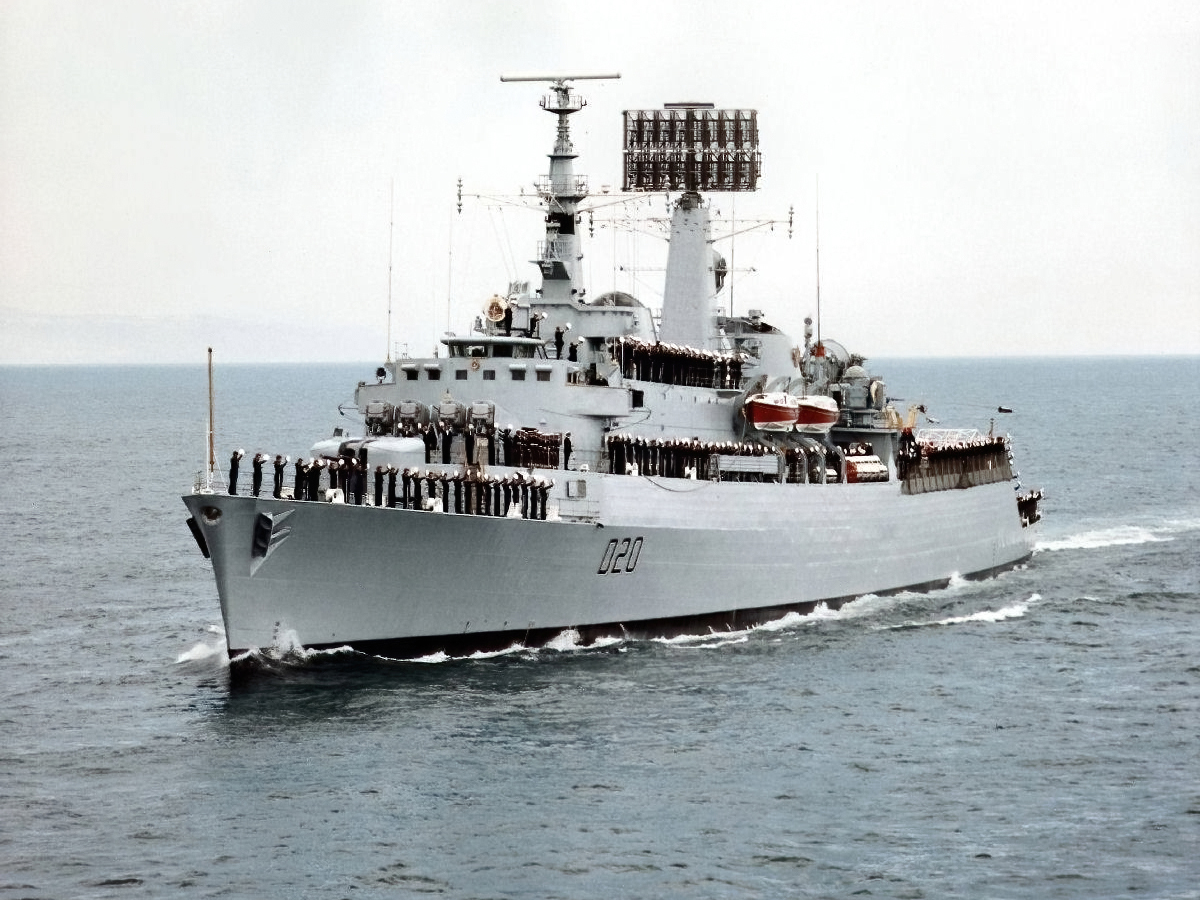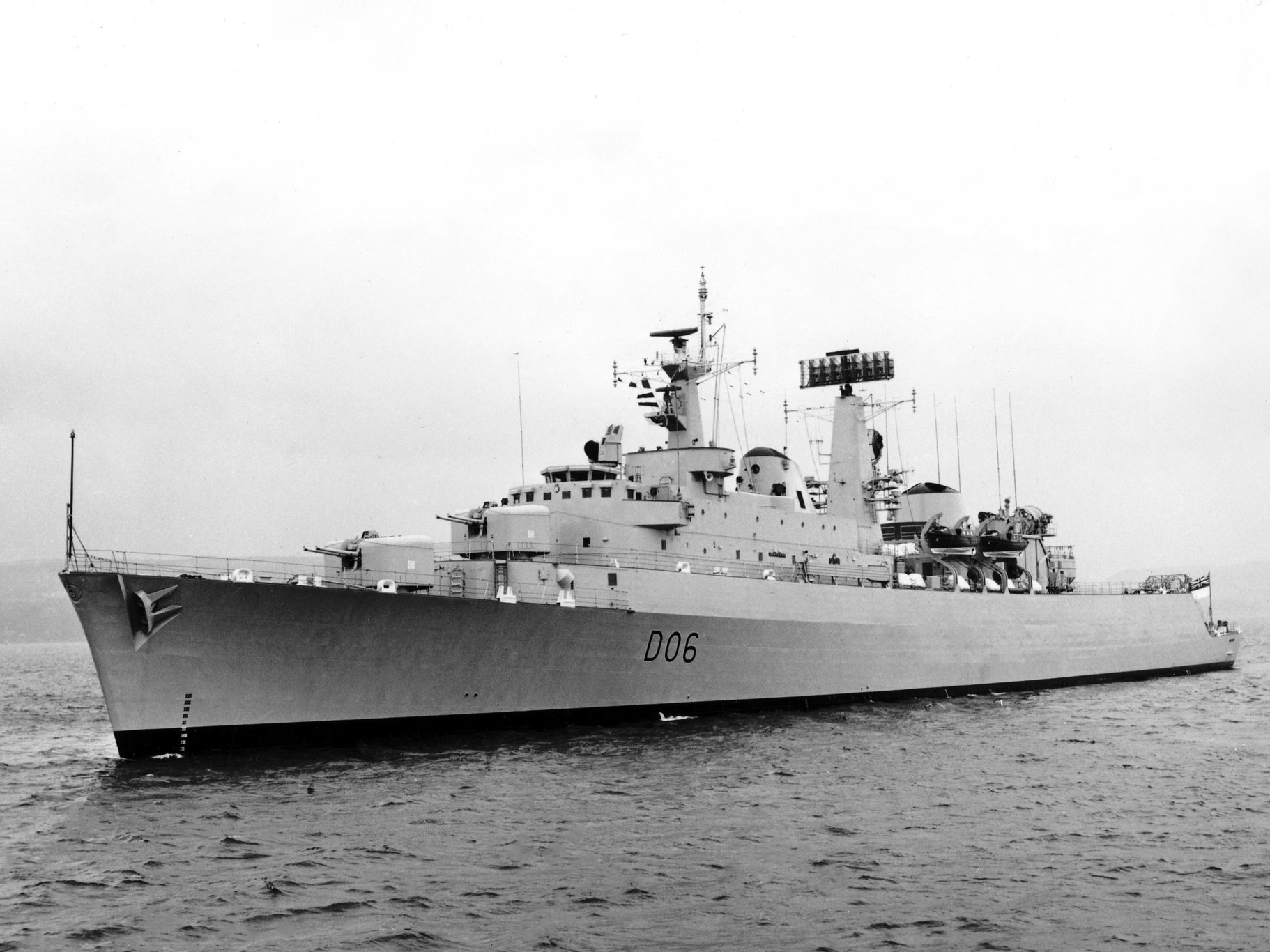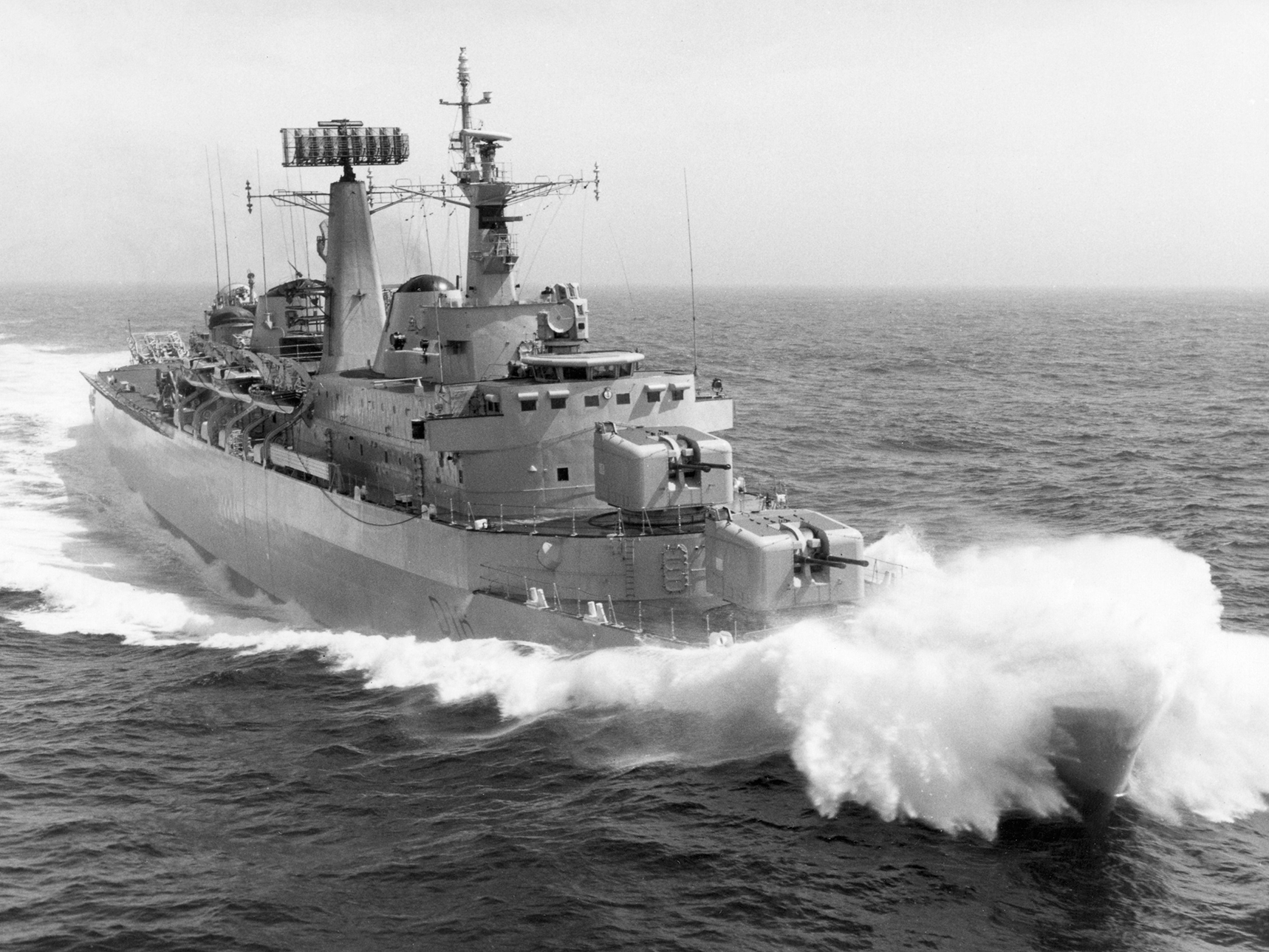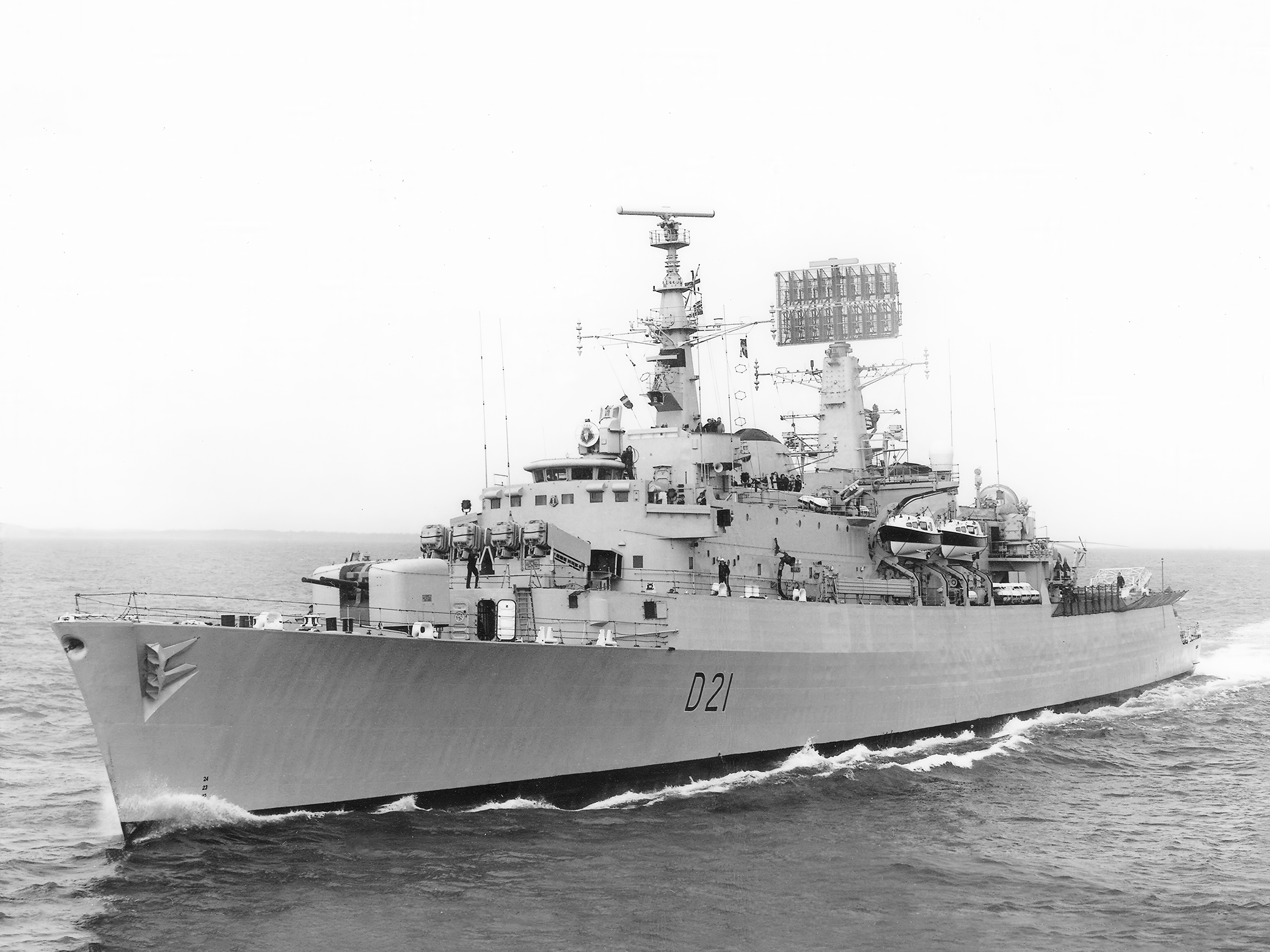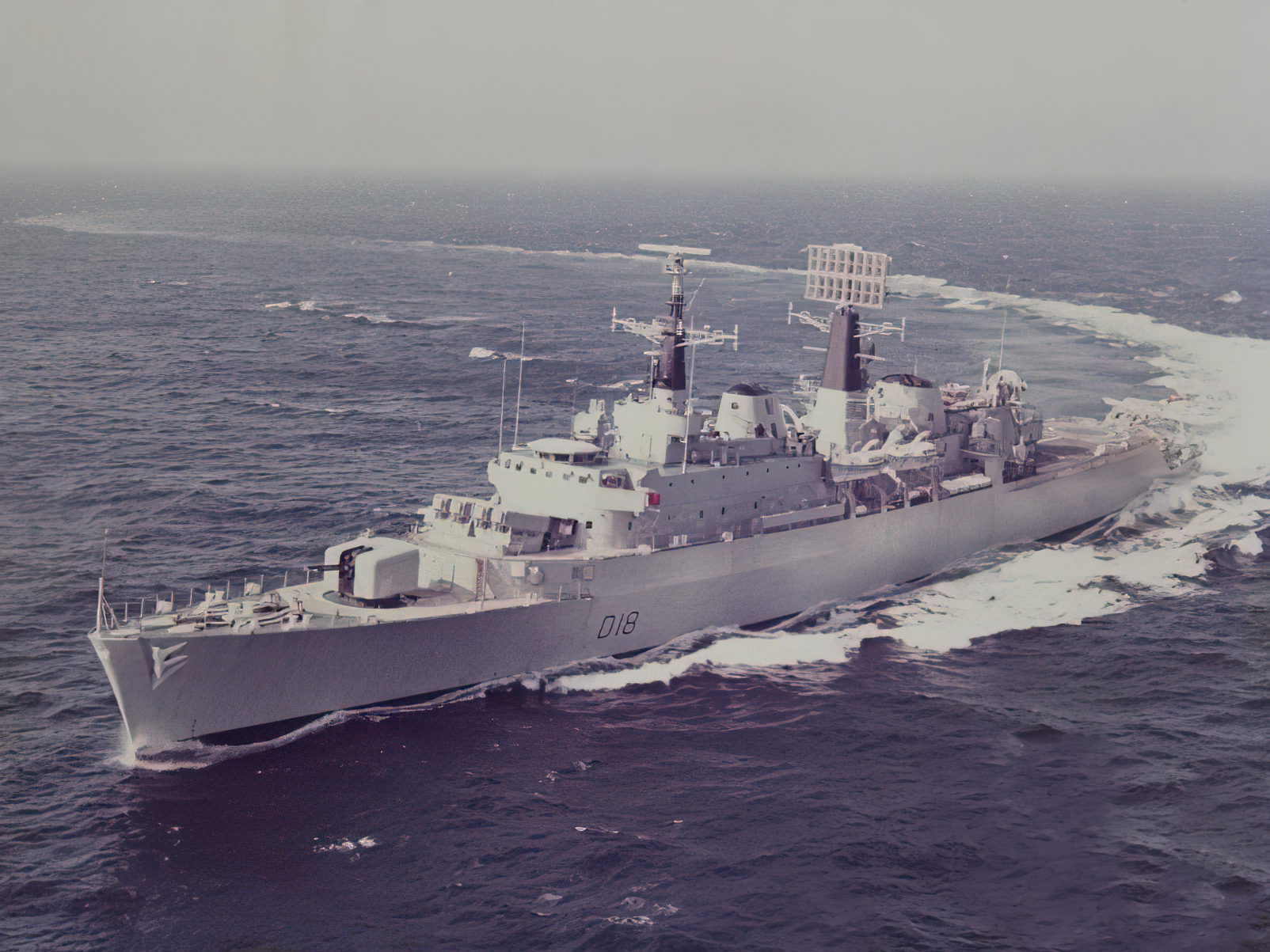Royal Navy County Class Destroyers: A Comprehensive Guide
Introduction
The County class destroyers were the first guided-missile destroyers built for the Royal Navy. Entering service in the 1960s, these large and powerful ships were designed to provide long-range air defence for carrier groups and task forces. Armed with the Seaslug surface-to-air missile system, they were among the most advanced warships of their time and represented a significant step in the Royal Navy’s transition to missile-armed fleets.
Origins and Design Development
The origins of the County class lie in the decision to equip the Royal Navy with missile-armed escorts capable of defending against high-altitude Soviet bombers and modern anti-ship weapons. The Seaslug missile system was selected as the primary armament, requiring large hulls to house the missile magazines, guidance radars and associated equipment.
Laid down in the late 1950s, the class displaced around 6,200 tonnes full load and measured 158 metres in length, making them substantially larger than previous destroyers. Their tall, distinctive masts carried radar systems that gave the class a unique silhouette.
Eight ships were built in total, divided into two groups, with later ships receiving updated electronics and facilities.
Ships of the Class
Design and Technical Features
The County class combined missile technology with traditional gunnery and aviation facilities, giving them multi-role capabilities.
Displacement: 6,200 tonnes full load.
Length: 158 metres.
Propulsion: Steam turbines with Combined Steam and Gas (COSAG) system, giving a top speed of 30 knots.
Missiles: Seaslug surface-to-air missile system with a twin-arm launcher.
Guns: Twin 4.5-inch gun mount forward, plus secondary 20mm weapons.
Other Weapons: Seacat short-range missile launchers added later, Exocet anti-ship missiles fitted during refits.
Aviation Facilities: Hangar and flight deck for a Wessex or Sea King helicopter.
Crew: Around 470 officers and ratings.
Although Seaslug was effective against high-altitude targets, it was less useful against low-flying aircraft and sea-skimming missiles. Later upgrades addressed some of these limitations by adding Seacat missiles and modernised radars.
Service and Operations
The County class saw extensive service during the Cold War, frequently deployed on patrols across the Atlantic, Mediterranean, and Far East.
Several ships gained particular prominence during the Falklands War of 1982. HMS Glamorgan survived an Exocet missile strike, becoming one of the first ships in history to be hit by such a weapon and live to tell the tale. HMS Antrim played a crucial role in retaking South Georgia, using her Wessex helicopter to disable the Argentine submarine Santa Fe. HMS Fife and HMS Glamorgan provided naval gunfire support during the conflict.
County class ships were also deployed on numerous NATO exercises, global deployments and humanitarian operations. By the late 1970s and early 1980s, however, they were increasingly expensive to operate compared to newer designs such as the Type 42 destroyers.
Legacy and Replacement
The class began to leave service in the 1980s, with the last ship decommissioned in the early 1990s. Several were sold abroad, including HMS Antrim, HMS Glamorgan, HMS Fife and HMS Norfolk, which all went to the Chilean Navy where they continued to serve for many years.
The Counties remain significant as the Royal Navy’s first true missile destroyers, bridging the gap between traditional gun-armed escorts and the modern missile ships of today. They paved the way for the Type 42 and later the Type 45 destroyers.
Summary – At a Glance
|
Ship |
Commissioned |
Notable Service Highlights |
Fate |
|
HMS Devonshire (D02) |
1962 | First of class, NATO deployments |
Decommissioned 1978 |
|
HMS Hampshire (D06) |
1963 | Cold War patrols, Mediterranean operations |
Decommissioned 1979 |
|
HMS Kent (D12) |
1963 | NATO and global deployments |
Decommissioned 1980 |
|
HMS London (D16) |
1963 | Flagship duties, global patrols |
Decommissioned 1981 |
|
HMS Fife (D20) |
1966 | Falklands War, naval gunfire support |
Sold to Chile 1987 |
|
HMS Glamorgan (D19) |
1966 | Falklands War, survived Exocet strike |
Sold to Chile 1986 |
|
HMS Antrim (D18) |
1967 | Falklands War, retaking South Georgia |
Sold to Chile 1984 |
|
HMS Norfolk (D21) |
1970 | NATO deployments, Cold War operations |
Sold to Chile 1982 |
Conclusion
The County class destroyers marked a turning point in Royal Navy warship design. As the first guided-missile destroyers, they were large, powerful and innovative, demonstrating the growing importance of missile technology at sea. Their service in the Falklands War cemented their place in naval history, while their later transfer to Chile ensured their legacy continued well beyond their Royal Navy careers.
Although replaced by smaller and more efficient designs, the Counties remain remembered as pioneering ships that bridged the gap between traditional gunnery destroyers and the modern missile-armed fleet.


